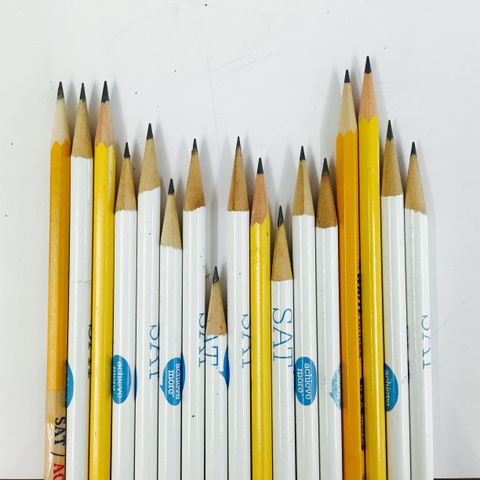Contacts
Info
Every day on the Test Crushers Chronicle, we show you how to blow the doors off the official SAT Problem of the Day.

-
Zero the Hero
12 FEB 2018 · Why do we love zero so much? Why is it so important to have a zero sitting opposite a quadratic equation? It's not magic. There's a very important reason!5m 5s -
Reading for Form
9 FEB 2018 · Dialogue isn't easy to analyze. Because it often contains no direct statements from the author about its meaning, it may feel squishy and subjective. But there's a sure way to identify the purpose of any dialogue.5m 56s -
Don't Think So Hard
5 FEB 2018 · If you think you're not good at "coming up with interpretations" of texts, you're in luck on the Reading section of the SAT. You don't have to "come up with" anything. In fact, trying to reach for meaning can work against you. The text will give you everything you need. Just let it say what it says and don't worry about having your own ideas.5m 12s -
If They Give You the Answer, Take It
2 FEB 2018 · You probably realize that taking a multiple choice test means having the answer in front of you. To take advantage of that fact, learn how to efficiently check each of the answer choices.9m 7s -
Thinking in Math
31 JAN 2018 · Math problems on the SAT are not about following a step-by-step process (although learning these processes does help). It's more about thinking mathematically. That is, it's about looking at patterns, making observations, and experimenting.6m 27s -
Language from the Ground Up
30 JAN 2018 · The subject of a sentence is not necessarily what the sentence is "about." To find the subject, you sometimes have to forget the meaning of the words and just look at how they are related to each other. You'll find that everything ultimately depends on one word, the foundation of the whole sentence; that's the subject.8m -
Why You Should Know Standard Form
29 JAN 2018 · Technically, you can solve every linear equation problem using the same equation form. (And if you have to choose one, go with slope-intercept form; many questions on the SAT math section revolve around the slope and y-intercept). But sometimes, it's a little bit more direct to use point-slope or standard form. So learn those as well, and practice moving from one form to another.7m 14s -
Open the Door
26 JAN 2018 · In order to talk about a subject, you have to start talking about it. To open the door to a topic, authors use transitions and topic sentences that let the reader know the context for the details to follow.6m 11s -
what is the point
25 JAN 2018 · When interpreting a point on a graph, keep in mind that every point represents not just a pair of numbers, but a relationship between two values. It stands not for a number but for a fact: the fact that when one thing has a certain value, another thing can have a certain related value. It can be translated into a sentence that has the form, "When..., then..."4m 1s -
The Answer is in the Question
24 JAN 2018 · Questions on the SAT have to be very specific in what they're asking, so that everyone who reads the question carefully can come to the same understanding. Use that fact to home in on the answer. Every word counts. Every single way in which the question is defined or qualified will correspond to some facet of the answer.6m 23s
Every day on the Test Crushers Chronicle, we show you how to blow the doors off the official SAT Problem of the Day.
Information
| Author | Test Maven |
| Categories | Education |
| Website | testmaven.net |
| ineffabilis@gmail.com |
Copyright 2024 - Spreaker Inc. an iHeartMedia Company
